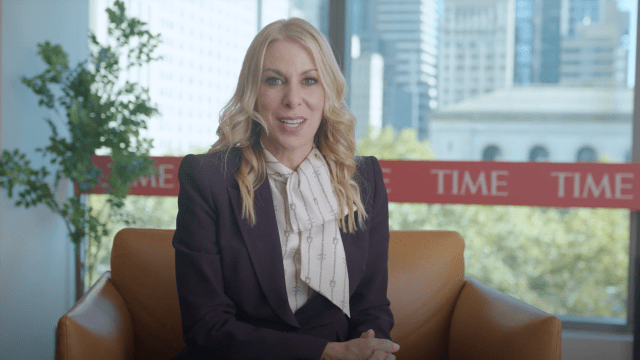## YouTube: Is it Time to Ditch Netflix?
Remember when YouTube was just a platform for cat videos and amateur singers? Those days are long gone. The YouTube landscape has evolved dramatically, blurring the lines between traditional television and online video. Now, with production values rivaling network shows and a treasure trove of diverse content, YouTube is becoming a serious contender for your streaming dollars.

Mastering YouTube for TV-Style Campaigns

YouTube has emerged as a dominant force in the realm of connected television (CTV), surpassing established platforms like Netflix, Hulu, and others in terms of reach, according to Nielsen. Despite this, many agencies still overlook YouTube’s potential within their CTV strategies, and traditional TV advertisers may be unaware of the high-quality content available on the platform. To unlock YouTube’s full potential for TV-style campaigns, a strategic approach that considers production value, storytelling, audience engagement, and effective collaboration is essential.

The Role of Production Value, Storytelling, and Audience Engagement
Creating “TV-quality” content on YouTube requires a commitment to production excellence that mirrors traditional television standards. This encompasses aspects such as high-resolution video, professional audio, compelling visuals, and engaging narratives.
Storytelling remains a fundamental pillar of successful content across all platforms, and YouTube is no exception. Compelling narratives that resonate with viewers are crucial for capturing attention and driving engagement.
Audience engagement is paramount on YouTube, where viewers have the power to interact with content through likes, comments, shares, and subscriptions. Encouraging audience participation through interactive elements, polls, and Q&A sessions can significantly enhance viewer engagement and build a loyal community around your brand or campaign.
Agencies and brands must recognize that YouTube’s diverse audience requires a tailored approach to content creation. Understanding the demographics, interests, and viewing habits of your target audience is essential for crafting content that resonates and drives results.

Best Practices for Collaboration: Bridging CTV, Social, and Video Teams
To maximize the impact of YouTube campaigns, seamless collaboration between CTV, social media, and video teams is crucial. A unified approach ensures consistency in messaging, branding, and overall campaign strategy across all platforms.
- Shared Goals and Objectives: Establish clear, measurable goals and objectives for YouTube campaigns that align with overall marketing strategies.
- Cross-Functional Communication: Foster open communication and knowledge sharing between CTV, social media, and video teams to ensure everyone is working towards a common vision.
- Integrated Content Strategy: Develop a cohesive content strategy that leverages the strengths of each platform while maintaining a consistent brand identity.
- Data-Driven Insights: Utilize data and analytics from all platforms to inform content creation, optimize campaign performance, and measure ROI.
- YouTube Analytics: Gain valuable insights into audience demographics, viewing habits, and content performance.
- Keyword Research: Identify relevant keywords and search terms to optimize video titles, descriptions, and tags for discoverability.
- Call to Action (CTA) Buttons: Encourage viewers to take specific actions, such as visiting a website, subscribing to a channel, or making a purchase.
- End Screens and Cards: Promote other videos, playlists, or external websites within your content to increase engagement and drive traffic.
- Key Performance Indicators (KPIs): Define clear KPIs that align with campaign goals, such as viewership, engagement, conversion rates, and brand awareness.
- A/B Testing: Experiment with different creative elements, targeting strategies, and call-to-actions to identify the most effective approaches.
- Attribution Modeling: Accurately attribute conversions and sales to YouTube campaigns using appropriate attribution models.
- Demographic Targeting: Reach viewers based on age, gender, location, and other demographic factors.
- Interest-Based Targeting: Focus on viewers who have expressed interest in specific topics, categories, or brands.
- Custom Audiences: Target viewers who have previously interacted with your brand or website.
- Remarketing: Retarget viewers who have previously watched your videos or visited your website with personalized ads.
- Interactive Content: Expect to see a rise in interactive content formats, such as quizzes, polls, and live streams, to further engage viewers and drive participation.
- Shoppable Video: Seamless integration of e-commerce functionalities within YouTube videos will allow viewers to purchase products directly from the platform.
- Increased Focus on Measurement: As advertisers demand greater transparency and accountability, YouTube will continue to refine its measurement tools and reporting capabilities.
- Advanced AI and Machine Learning: AI-powered tools will play an increasingly important role in optimizing campaign performance, personalizing content, and predicting viewer behavior.

Leveraging YouTube’s Tools: Optimizing for Reach and Impact
YouTube offers a robust suite of tools designed to help creators and marketers optimize their content for reach and impact.
Case Studies: Successful Agencies and Brands on YouTube
Numerous agencies and brands have successfully leveraged YouTube to deliver impactful TV-style campaigns.
[Example 1: Agency Name] and [Brand Name]: Describe a successful campaign that demonstrates the power of YouTube for TV-style advertising. Include details about the campaign’s objectives, creative approach, and results.
[Example 2: Agency Name] and [Brand Name]: Highlight another successful case study that showcases best practices for YouTube campaign execution. Include specific examples of how production value, storytelling, and audience engagement were leveraged to achieve success.
Maximizing Your YouTube Investment
Data-Driven Strategies: Measuring Success and ROI
To ensure a strong return on investment (ROI) for YouTube campaigns, data-driven strategies are essential. Comprehensive tracking and measurement allow marketers to understand what’s working, optimize performance, and demonstrate the value of their efforts.
Targeting and Personalization: Reaching the Right Audience
YouTube’s advanced targeting options enable marketers to reach highly specific audiences based on demographics, interests, behaviors, and even past viewing history.
Future Trends: The Evolving Landscape of YouTube for TV Advertising
The landscape of YouTube for TV advertising is constantly evolving. Emerging trends are shaping the future of this dynamic platform.
Conclusion
So, there you have it. YouTube is no longer just a platform for cat videos and DIY tutorials. It’s evolving into a powerhouse of high-quality, TV-grade content, pushing the boundaries of what’s possible in online video. The article has explored how creators are leveraging advanced production techniques, innovative storytelling, and the power of community to deliver compelling narratives that rival traditional television. This shift has significant implications for both creators and viewers. For creators, it presents a lucrative opportunity to build a loyal audience and bypass the gatekeepers of traditional media. For viewers, it opens up a world of diverse, engaging content, curated by passionate individuals rather than monolithic networks. The future of entertainment is undoubtedly intertwined with YouTube’s evolution. As technology advances and creators continue to innovate, the line between online and traditional media will blur even further. This democratization of content creation empowers anyone with a story to tell and a camera to capture it, ushering in an era of unprecedented creativity and accessibility. The question isn’t if YouTube will become the dominant force in entertainment, but rather, what stories will it unlock and what worlds will it build along the way? The answer, my friends, lies in the hands of the creators and the eyes of the viewers. The future of storytelling is here, and it’s incredibly exciting.

